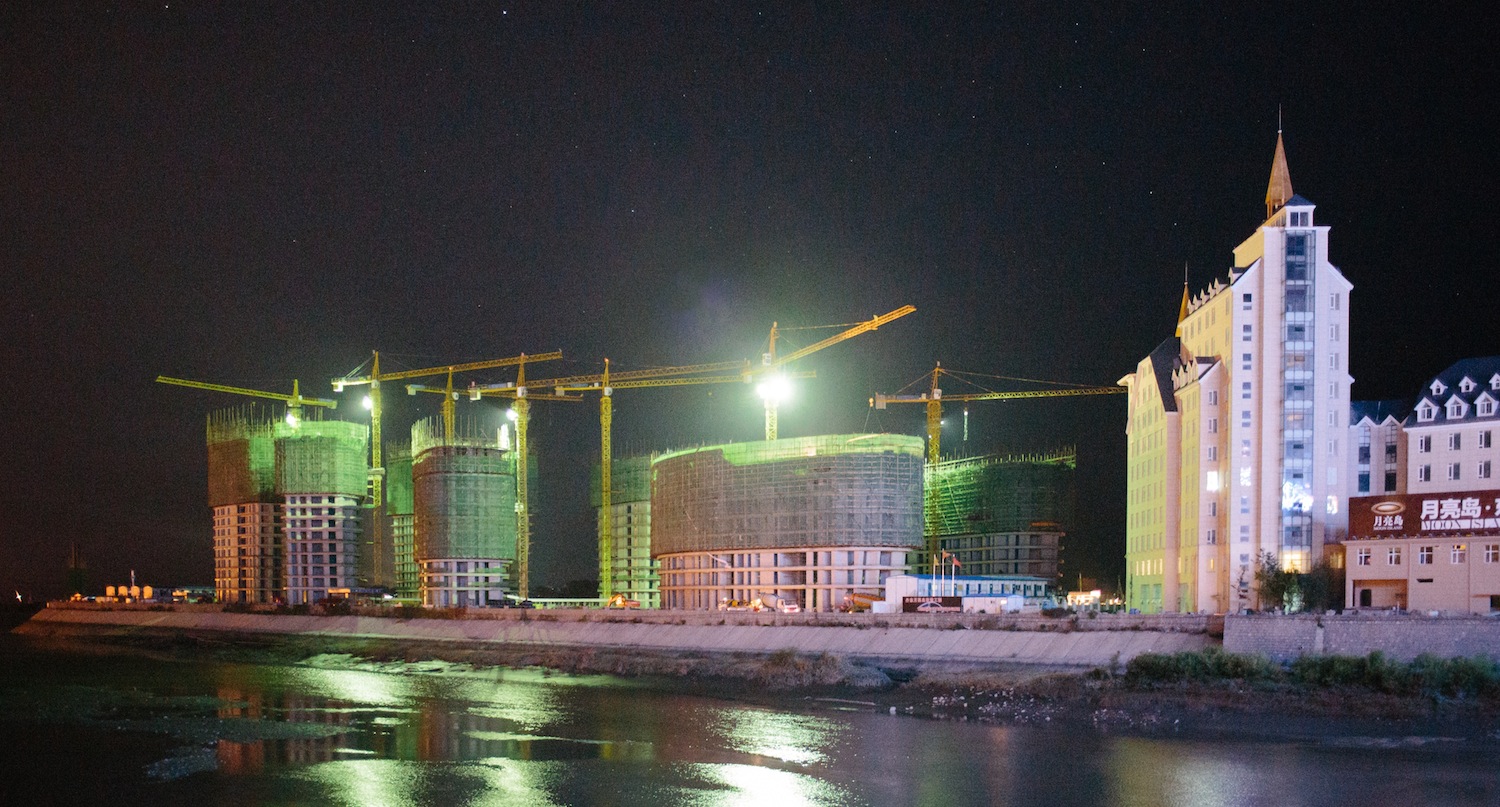Three countries—The United States, China, and India—will account for nearly three-fifths of worldwide construction growth over the next 15 years. However, their respective expansions are expected to vary markedly.
In their latest report, “Global Construction 2030,” Global Construction Perspectives and Oxford Economics estimate that annual worldwide construction activity would increase by an average of 3.9% over the next decade and a half, or one percentage point higher than the projected global GDP over that period.
The report forecasts that construction output will expand by 85% to $15.5 trillion worldwide in 2030, with the U.S., China, and India accounting for 57% of that growth. While China should remain the world’s largest construction market, its building activity is slowing and will increase “only marginally” during these years.
U.S. construction, on the other hand, is expected to grow at a 5% per year clip. America’s southern states will be the country’s construction engine over this period. And four metropolitan areas—New York, Chicago, Los Angeles, and Houston, which aggregately are home to 15% of the U.S. population—alone should account for 27% of the country’s entire construction output over this period.
Even as speculation, this report is good news for American construction workers whose industry has yet to recover fully from the last recession. Construction unemployment rate in October fell to its lowest level since 2007, according to the Bureau of Labor Statistics. But there were 6.43 million construction workers employed in the U.S. in October, compared to 7.73 million in April 2006.
Census Bureau data show that construction spending in the U.S. has been rising since February 2011—when it was just shy of an annualized $755 billion—to $1.09 trillion in September 2015. But that latest figure still falls short of the last peak, $1.213 trillion in March 2006.
Back on the world stage, India is on pace to surpass Japan as the world’s third-largest construction market by 2021, and grow at twice the rate of China through 2030, says Graham Robinson, Global Construction Perspectives’ executive director. He notes that India’s urban population over the next 15 years is expected to increase by a “staggering” 165 million, with Delhi alone adding 10.4 million people to become the world’s second-largest city.
The report sees only modest construction growth going on in Europe, which might not reach pre-recession levels again until 2025. The exception could be the United Kingdom, which the report sees overtaking Germany as the world’s sixth-largest construction market by 2030.
On the other hand, “the current weakness in most emerging countries [such as Brazil, Indonesia, and Russia] is likely to be temporary, with higher growth rates soon returning,” writes Mike Betts of Global Construction Perspectives.
The full report can be downloaded (single user license) for £1,875 ($US2,851).
Related Stories
| Aug 11, 2010
AIA Course: Historic Masonry — Restoration and Renovation
Historic restoration and preservation efforts are accelerating throughout the U.S., thanks in part to available tax credits, awards programs, and green building trends. While these projects entail many different building components and systems, façade restoration—as the public face of these older structures—is a key focus. Earn 1.0 AIA learning unit by taking this free course from Building Design+Construction.
| Aug 11, 2010
BIM adoption tops 80% among the nation's largest AEC firms, according to BD+C's Giants 300 survey
The nation's largest architecture, engineering, and construction companies are on the BIM bandwagon in a big way, according to Building Design+Construction's premier Top 50 BIM Adopters ranking, published as part of the 2009 Giants 300 survey. Of the 320 AEC firms that participated in Giants survey, 83% report having at least one BIM seat license in house, half have more than 30 seats, and near...
| Aug 11, 2010
Integrated Project Delivery builds a brave, new BIM world
Three-dimensional information, such as that provided by building information modeling, allows all members of the Building Team to visualize the many components of a project and how they work together. BIM and other 3D tools convey the idea and intent of the designer to the entire Building Team and lay the groundwork for integrated project delivery.
| Aug 11, 2010
Great Solutions: Healthcare
11. Operating Room-Integrated MRI will Help Neurosurgeons Get it Right the First Time A major limitation of traditional brain cancer surgery is the lack of scanning capability in the operating room. Neurosurgeons do their best to visually identify and remove the cancerous tissue, but only an MRI scan will confirm if the operation was a complete success or not.
| Aug 11, 2010
Great Solutions: Collaboration
9. HOK Takes Videoconferencing to A New Level with its Advanced Collaboration Rooms To help foster collaboration among its 2,212 employees while cutting travel time, expenses, and carbon emissions traveling between its 24 office locations, HOK is fitting out its major offices with prototype videoconferencing rooms that are like no other in the U.
| Aug 11, 2010
2009 Judging Panel
A Matthew H. Johnson, PE Associate Principal Simpson Gumpertz & HegerWaltham, Mass. B K. Nam Shiu, SE, PEVP Walker Restoration Consultants Elgin, Ill. C David P. Callan, PE, CEM, LEED APSVPEnvironmental Systems DesignChicago D Ken Osmun, PA, DBIA, LEED AP Group President, ConstructionWight & Company Darien, Ill.
| Aug 11, 2010
Inspiring Offices: Office Design That Drives Creativity
Office design has always been linked to productivity—how many workers can be reasonably squeezed into a given space—but why isn’t it more frequently linked to creativity? “In general, I don’t think enough people link the design of space to business outcome,” says Janice Linster, partner with the Minneapolis design firm Studio Hive.







